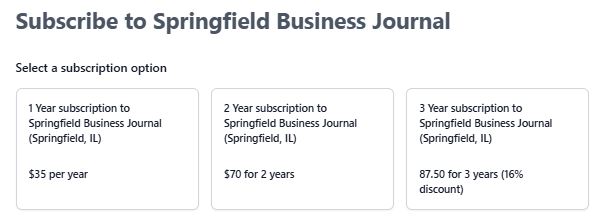You may have been shocked to hear that mine subsidence forced Lutheran High School to relocate in 2022. The idea of your place of business or residence being affected by a similar event might seem alarming at first. Springfield is known for the presence of underground mines, so this possibility might be more common than one might realize.
Legally defined as a lateral or vertical ground movement that directly damages a structure and that results from the collapse of a man-made underground mine, mine subsidence can happen in areas where coal, clay, limestone and other minerals were extracted. In other words, if the top of a mine collapses below the ground, then damage can be done to the foundation above the mine. Springfield had five operational coal mines in the early part of the 1900s, which means a large part of the city rests on top of coal mines. You can view a map showing the locations of these mines at https://ilmineswiki.web.illinois.edu/wiki/ILMINES.
Evidence of mine subsidence includes cracks in walls or floors, doors and windows that are no longer square, floors not being level, and even the sounds of cracking and popping as the house shifts. According to the Illinois Department of Natural Resources, “The first thing a homeowner should do once subsidence damage is suspected is to request the Abandoned Mined Lands Reclamation Division investigate and evaluate the damages to determine if hazardous conditions exist.” The homeowner should then contact his/her insurance company and file a claim with his/her agent. “The agent, through the homeowner’s insurance company, will in turn notify the Illinois Mine Subsidence Insurance Fund and inform them that an insurance claim has been submitted.”
It is likely mine subsidence is included in a property owner’s policy. In areas such as Sangamon County where a considerable amount of land is undermined, mine-subsidence insurance is mandatory. Ryan Augustine, a partner at Troxell insurance agency, said, “All insurance carriers in Illinois must provide coverage unless the purchaser rejects the coverage in writing. That means that it is important to pay attention to your quotes and the forms you are signing when looking at new insurance policies they are not all created equally.”
Of course, we would all prefer not to have a claim for mine subsidence. To help avoid surprises, the Illinois Mine Subsidence Disclosure Act states that the seller of a property must disclose to the purchaser and lender all insurance claims paid to the owner for mine subsidence-related issues. In addition, the Illinois Residential Real Property Disclosure Act requires a seller to disclose if he/she is “aware of mine subsidence, underground pits, settlement, sliding, upheaval or other earth stability defects on the premises.”
Once subsidence has begun, it can take years for the full effect to be known. Augustine added, “Insured and carriers should be aware that mine subsidence claims could potentially take years to be fully resolved as the land named in any claim must completely settle prior to any final payouts.” Per the DNR, “The homeowner has many on-going responsibilities while the ground movements are active. Major areas of responsibilities include: 1) making routine safety inspections and temporary repair, and 2) examining various financial and reconstruction options in order to make informed decisions about the final repair of the home. Safety inspections should include inspecting utilities such as gas, water and sewer lines for leaks; functionality of doors, windows, and electric lines and weather proofing.”
Augustine also noted that, “Limits for mine subsidence coverage are usually the same as your main policy for other perils like fire or wind. However, the maximum amount an insured can purchase through their standard carrier is $750,000. This limit is established in state statue, with the Illinois Mine Subsidence Insurance Fund providing reinsurance to insurance companies up to this limit.”
The insurance payout to Lutheran High School was the maximum $750,000, which is not enough to replace the high school, but is enough to cover most residential properties in the Springfield area. Augustine warned, “Given the mining history of the area, individuals and businesses must be aware of this potential risk posed by mine subsidence and be educated on the limit of $750,000 that is offered by a majority of carriers.
“So, mine subsidence is one of many factors to consider when buying and insuring a property in Sangamon County. Engage a quality inspector and insurance agent, and hopefully you will avoid subsidence altogether or be covered if your property is affected.”
This article appears in March 2024.


